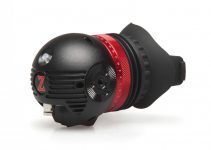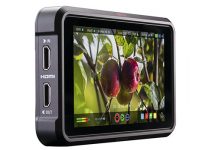The ARRI Trinity is by far one of the most amazing high-end production stabilization tools that Hollywood has for its wheelhouse of movie-making tricks but it’s super expensive. A little while back, Josh Morgan, of Momentum Productions, showed us how we could build our own DIY rigs to get a similar effect for pennies on the dollar.
The rig might not be able to balance a fully rigged Alexa Mini LF or anything but us little-guys, who just want to capture the coolest, most dynamic and entertaining shots that we can, this rig presents a viable option to bring our dreams into reality.
But building the rig, that’s the easy part, wrapping your head around stabilizing and calibrating the DIY Trinity is a whole ‘nother story. Luckily, Josh is back again with his helpful step-by-step process for balancing this amazing DIY creation.
The DIY Trinity Gimbal is comprised of a manual steadicam stabilizer with a handheld 3-Axis gimbal mounted on top. Brand names can vary, but for this example Josh is using a Zhiyun Weebill S gimbal, and a Flycam Redking sled (the sled is the part of a steadicam that the camera goes on).
These are two independent systems that need to be balanced separately to allow them to work together effortlessly.
Let’s breakdown Josh’s rundown of how this is done.
Connecting the Systems
- Attach the dovetail plate from the Flycam (sled) to the bottom of the Weebill S gimbal in a mid-position on the plate.
- With the Flycam system safely sitting on a flat surface, connect the dovetail plate (with the Weebill S on it) on to the top of the Flycam.
- Mount your camera on to the Weebill S.
*That was easy right? Not so fast! Now you’ve got to balance this thing.
Balancing the Dual System
- Manually lock the motors on the Weebill S so they remain in a fixed position.
- This will keep the any motion of the gimbal from messing with your steadicam’s balance.
- The ability to lock the motors is one of the reasons Josh recommends the Weebill S.
- Carefully lift the rig up by the handle on the Flycam and see what happens.
- If the whole rig wants to flip upside down, there isn’t enough weight on the bottom.
- You can either add weights, or extend the telescoping pole on the sled to compensate.
- Once you have enough weight on the bottom of the rig, it’s time to test the drop time.
- It should take approximately 3 seconds for the bottom of the sled to drop from a horizontal position.
- Rotate the sled sideways to a horizontal position, and release the bottom and time how quickly it falls.
- If it falls faster than 3 seconds, you’ve got too much weight.
- If it falls slower than 3 seconds, you don’t have enough weight on the bottom.
- Hold the sled handle, wait, and see where the level of the system sits.
- If it leans a little forward, adjust the plate on the top of the Flycam slightly toward the back until it becomes level.
- If it leans to the right or left, use the adjustments below the plate to push it slightly in the opposite direction.
- Once your Steadicam sled is sitting level, you’re good to move on to balancing the Weebill S (gimbal).
Place the rig back on a flat surface, and balance the gimbal as you normally would.
Note: you could have done this first before attaching the Weebill to the Flycam, and I’m not sure why Josh recommends doing it second. Just remember to lock your motors when balancing the Flycam so the camera isn’t moving around on the Weebill.
This is an ingenious setup for smaller cameras that give you most of the features of the high-end ARRI Trinity. The main differences being that the trinity has a much higher calibration tolerance (meaning you can be really off on your balance and it will still performance perfectly), the Trinity can hold a lot more weight, and obviously the Trinity costs a whole lot more than this solution.
Hopefully, this tutorial was helpful. Steadicam balancing/work is really a form of art that requires lots of practice and even more patience. But as you can see from the results of this innovative little setup, the time spent is well worth it.
[source: Momentum Productions]
Disclaimer: As an Amazon Associate partner and participant in B&H and Adorama Affiliate programmes, we earn a small comission from each purchase made through the affiliate links listed above at no additional cost to you.
Claim your copy of DAVINCI RESOLVE - SIMPLIFIED COURSE with 50% off! Get Instant Access!





